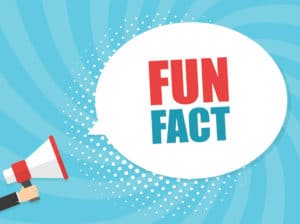 Today, printers and copiers perform vital roles in a multitude of businesses and institutions around the globe. From office supply store chains to lone business management consultants, numerous enterprises depend directly or indirectly upon this important economic sector. Analysts routinely track the performance of the industry by compiling extensive research statistics.(1)
Today, printers and copiers perform vital roles in a multitude of businesses and institutions around the globe. From office supply store chains to lone business management consultants, numerous enterprises depend directly or indirectly upon this important economic sector. Analysts routinely track the performance of the industry by compiling extensive research statistics.(1)
Yet the significance of printer and copier sales does not prevent office workers from gathering interesting trivia about this field. If you’ve searched for fun facts about office equipment, you might consider entertaining coworkers around the water cooler with six fascinating tidbits about printers and copiers:
- Design teams in Scandinavia and Germany created the world’s largest digital printer in 2013. Called “Infinitus”, this massive machine reportedly reproduces images up to 600 square meters. It allows motion picture producers and set designers to create highly cost-effective panoramic background images for the movie industry.
- Several companies have recently developed inks intended for use on baked goods. These edible products allows highly automated bakeries and snack companies to transfer crisp digital images and logos to cakes, cupcakes, cookies, and other desserts very quickly and uniformly. (Many cakes on sale at grocery store bakeries likely use this high tech innovation already.)
- One of the world’s smallest commercially available printers, the PlanOnPrintStick attaches easily to a USB port. This device allegedly prints based upon heat. It includes a print cartridge and rolls of thermal paper. The printer measures just 1″ by 2″ and transmits information from laptops, PDAs, and smart phones.
- Xerox offered the world’s first commercial photocopier for sale in 1959. This technology has dropped significantly in price since it initially became available on the marketplace. The company’s 1981 office grade laser printer carried a retail price tag of around $17,000!
- Photocopying became so accurate following the widespread adoption of laser printing technology that many nations around the world updated their currencies to thwart counterfeiters. Watermarks, holograms, customized inks, and special embedded security strips help safeguard bank notes today.
- The man who helped invent modern electrophotography, physicist Chester Floyd Carlson, first worked as a patent attorney. Born in 1906, he began trying to develop a process for reproducing large volumes of documents more easily during the 1930s. Wikipedia reports he received a patent on his electrophotography invention in 1942.
Helpful Resources:
- https://www.enxmag.com/twii/uncategorized/2017/01/despite-decent-u-s-market-the-overall-industry-suffered-in-2016-with-no-big-changes-this-year/
- http://www.tonerink.com.au/blog/10-printing-facts-you-never-knew-about-printers/
- https://www.bigimagesystems.com/big-image-introduces-infinitus-2-worlds-largest-digital-printer-printing-soft-materials/
- https://www.youtube.com/watch?v=uFcjsPFqA2U
- https://www.pcworld.com/article/149884/planon_printstik_ps910.html
- https://en.wikipedia.org/wiki/Photocopier
- https://en.wikipedia.org/wiki/Chester_Carlson
